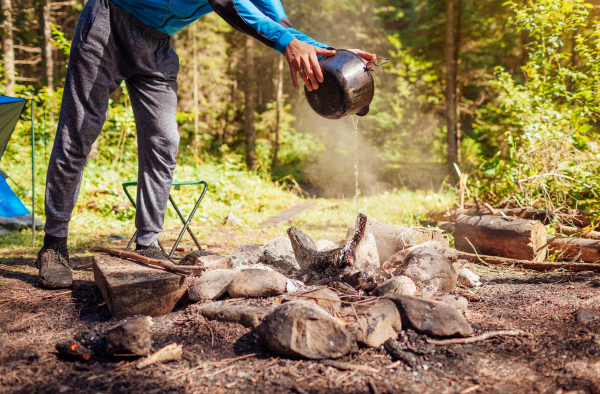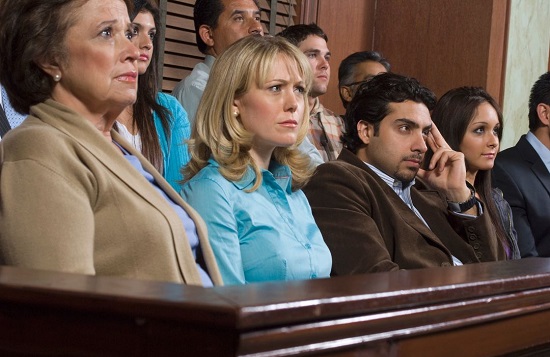Campfires are classic! From s’mores to ghost stories, fireside activities have cemented themselves into the summer traditions of countless Michiganders.
While campfires are a symbol of summertime enjoyed by all, they can also ruin your day quickly! Whether through burns, property destruction, or smoke inhalation, there are lots of ways that bonfires can be bad for your health and safety.
The goal of this blog is to remind you of a few of the most common fire related hazards that lead to injuries and property destruction – that way you can be safe and prepared the next time you host or attend a fireside gathering.
Unattended Fires
The first and arguably the most troublesome hazard are unattended fires.
Unattended fires can be unassuming, especially once a fire is reduced to mere hot coals. Although a fire may not appear to be roaring uncontrollably, it’s important to never leave a campfire unattended for any extended period of time, no matter how large or small the fire.
One of the most serious possibilities that can result from an unattended fire is a wildfire. From Los Angeles to Ontario, wildfires have been prominent and deadly natural disasters in 2025. With human activity currently accounting for nearly 85% of all wildfires – it’s more important than ever to never leave a campfire unattended.
A solid rule of thumb is to extinguish a campfire whenever you plan to leave the fire site. This includes a quick trip to the bathroom, a dip in the lake, a run to the convenience store, etc. – if eyes aren’t on the fire, it needs to be put out. This is because fire is extremely volatile – it only takes seconds for a gust of wind to morph your small controlled fire into a full-blown, serious problem.
You may now be left with the question, “so how do I actually go about extinguishing a campfire when I plan to leave?” Here’s how:
- Pour lots of water on the fire. Drown all embers, not just the red ones. Pour until hissing sound stops.
- If you do not have water, stir dirt or sand into the embers with a shovel to bury the fire.
- With your shovel, scrape any remaining sticks and logs to remove any embers. Make sure that no embers are exposed and still smoldering.
- Continue adding water, dirt or sand and stirring with a shovel until all material is cool.
- If it’s too hot to touch, it’s too hot to leave – make sure the fire site is cool enough to touch before leaving.
By following these steps, you can help do your part in maintaining safe campsites and preventing wildfires, all summer long.
Poor Fire Pit Placement
The next hazard on this list refers to the placement of the fire pit itself.
There’s a reason open fires were used to heat homes and cook food, prior to modern technology! Fire pits give off an incredible amount of heat. For this reason, it’s crucial that you select a safe spot for this heat-producing hazard to reside.
“Where exactly is a safe spot?” you might ask. For starters, that means nowhere near buildings or other permanent structures. It’s generally recommended to keep at least 10 feet between your fire pit and any surrounding structures – ideally 20 feet. This distance includes not only horizontal measurements, but vertical as well. That means if there’s a tree with overhanging branches, trim them away to reduce your fire risk. Some exceptions are made for fire pits situated on outdoor decks, but only if your fire pit is placed atop pavers or a pad designed to protect the deck surface.
While determining where in your yard to place your fire pit, it’s a good idea to consult with local fire pit codes as well as your homeowners insurance. There could be local, city, county, or HOA regulations dictating where fire pits are allowed to be placed. Similarly, your homeowners insurance may require you to notify them if you plan to install a fire pit, in order to increase your coverage.
In a similar vein to proximity from permanent structures, placing a firepit on a level surface is also of the utmost importance. For obvious reasons, it is not a good idea to have people circle around a fire pit that is teetering or is prone to getting tipped over. Make sure your fire pit is firmly situated on a flat surface, before you invite anyone over for a bonfire.
Use of Accelerants
One of the most dangerous—and unfortunately common—causes of bonfire-related injuries is the misuse of accelerants like gasoline, lighter fluid, or even aerosol sprays.
Although they might seem like a quick and effective way to quickly get your fire going strong, accelerants pose some serious risks. These substances can ignite unpredictably and violently. If you aren’t careful, vapors can ignite in the air – or worse – the accelerant source can catch fire, leading to burns, toxic fumes, and even explosions!
Common scenarios involving accelerants include:
- Pouring gasoline or lighter fluid onto an already-lit fire
- Dousing the fire area excessively before ignition
- Failing to warn others nearby that an accelerant is about to be used
As previously stated, accelerant use can lead to burns and extensive property damage. They are rarely needed – if ever – and should be avoided if possible. A solid rule of thumb is to start and manage a fire the safe way – the old fashioned way – with patience, kindling, and common sense.
Trip and Fall Hazards Around the Fire
Fireside gatherings don’t just pose risks from the flames themselves—injuries are commonly caused by what’s around the fire – including poor lighting, uneven ground, and cluttered seating areas.
Some of the most common fire side trip hazards include:
- Unlit walkways: Guests unfamiliar with the terrain may stumble after dark
- Uneven or sloped ground: Especially problematic in rural or wooded cabin areas
- Loose stones or gravel: Common in DIY fire pit setups
- Cluttered seating area: Fire wood, folding chairs, and other clutter can create dangerous obstacles
- Rope lights or extension cords: Frequently used for outdoor lighting but often become tripping hazards themselves
The danger of these mentioned trip hazards are amplified not only by the open fire, but also by the darkness and potential consumption of alcohol. The next time you host or attend a fireside gathering, take it upon yourself to make sure the area around the fire is clutter free and void of any potential trip hazards. This could stop a very painful – and preventable – incident from happening.
Fireworks Near the Fire
Fireworks and bonfires often go hand-in-hand during numerous different summertime celebrations. However, combining the two can be a recipe for chaos – increasing the risk of injury and property damage drastically.
If you want a full breakdown of firework safety and liability, you can view our previous blog on fireworks. For the purposes of this blog, the focus will specifically be on how fireworks can be hazardous around an open flame.
As stated above, fire pits and fireworks are more like oil and water than festive summertime-compliments. Here are a few common, dangerous scenarios involving the two: ● Putting any type of firework (used or unused) into the fire (either as a joke or as a way to dispose of firework debris)
- Roman candles or bottle rockets veering off course and hitting someone seated around the fire
- Children lighting fireworks unsupervised near kindling, logs, or gas canisters
- Lighting off firework mortars too close to the bonfire seating area and/or not properly securing the firework mortars
All of these rookie moves can lead to serious injuries and widespread property damage. In order to avoid uncontrollable fires, explosions, burns, and flying projectiles, be sure to steer clear of the scenarios described above.
If you are the property owner where a summer time gathering is taking place, make sure there are clear rules with regard to firework use and remember – keep fireworks far away from any open flames.
Hot Embers or Equipment
The final fireside hazard featured in this blog is the most unassuming.
Hot coals and equipment like fire pokers and marshmallow skewers can present very serious burn risks (in addition to the wildfire risks described above). Although a flame may not be present, coals and embers can burn hotter than 500℃ for up to 24 hours after a fire is extinguished.
With this in mind, it should come as no surprise that over 70% of campfire burns are not caused by the flame, but by the less striking danger – hot embers. Additionally, hot equipment like marshmallow skewers presents an especially potent danger to children who may not fully grasp the concept of heat retention.
As a property owner hosting a bonfire, you can take precautions against these potential hot messes. For starters, covering a fire pit with a lid or grate is a smart precaution to take once the flames are fully extinguished. This ensures that hours later, no unassuming guests mistakenly stroll over hot coals. Even though you should not leave a fire unattended unless it’s cool to the touch, no one is perfect and sometimes mistakes happen – this precaution acts as insurance.
Additionally, make sure not to leave hot tools laying haphazardly around the fire – especially with young children nearby. By designating a spot to place hot equipment, you can ensure that no one is accidentally burned by grabbing a smoldering skewer or piping-hot poker.
Get David Get Paid
If you or a loved one has suffered an injury due to a campfire accident, you don’t have to navigate the legal aftermath alone. At Femminineo Law, we understand how quickly a summer evening can turn into a medical emergency—and how complex liability can be in these situations.
Let our experienced personal injury team review your case and help you understand your rights. Give us a call at 855-65-CRASH today, or visit our website at getdavidgetpaid.com.



